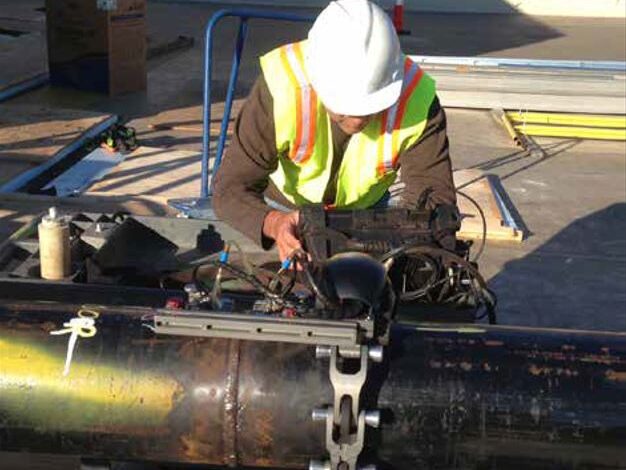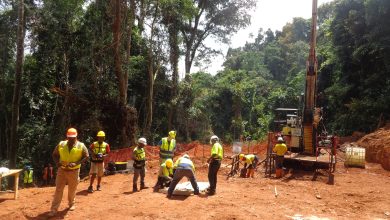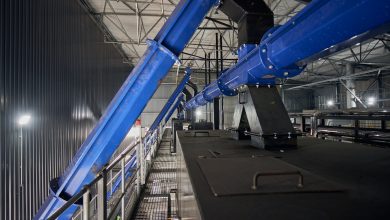
Unlike Manual Ultrasonic Testing (Manual Testing), PAUT techniques are extremely versatile and are often used to complement other well recognised Non-Destructive Testing (NDT) technologies.
Organisations involved in Mining oil and gas, and power generation need their boilers to be working safely and efficiently with minimal downtime and high equipment availability all the time. This necessitates the use of testing techniques that can be employed to carry out the testing correctly, safely, cost effectively and timeously.
There are a number of fairly new technologies that have simplified and revolutionised the way boiler tube weld inspection is conducted on power plants in South Africa and other countries. Currently, phased Array Ultrasonic Testing (PAUT) is one of NDT techniques enjoying wide usage.
Just the thing
PAUT is just the thing for industry. This is considering that, historically, boiler tube weld inspections have been radiographed to inspect for weld associated flaws. Carrying out the process using radiography required the evacuation of all personnel due to safety hazards associated with the technique.
On the other hand, effectively, PAUT addresses the limitations of radiography. “PAUT can be applied in diverse industrial sectors such as pre-and in-service testing, power generation and in the petrochemical and oil and gas industries, amongst others. Moreover, the process is not only limited to testing welds, but can be extended to various product sectors such as castings, forgings and tubes. NDT personnel test materials or products for imperfections, without destroying these products or materials,” says The Southern African Institute of Welding’s (SAIW) National Training Manager, Mark Digby.
Fundamental elements
Since PAUT is integral to preventative maintenance of equipment, it is central that industry grasp its fundamental elements, mainly: Benefits of Sound Application, Implementing an Effective Detection Programme, Operator Competence, and Testing Integrity.
- A vast array of benefits
Unlike Manual Ultrasonic Testing (Manual Testing), PAUT techniques are extremely versatile and are often used to complement other well recognised NDT inspection methods. This is contrary to the misconception that they can be used in isolation. Generally, PAUT offer a vast array of benefits as follows:
- Testing using one probe from a fixed distance (in restricted areas)
First, Ultrasonic Phased Array Testing can be conducted using one PA probe from a fixed distance. In the process, the angles can be adjusted electronically by phasing the signals to the crystal – meaning multiple angles can be used to test the component. This is unlike Manual UT, which often requires three or more different angle probes, where the actual probe must be changed to change the angle.
When using Manual UT, the probe needs to be rastered back and forth for full component coverage. however, the Phased Array beam can be focused and steered to inspect selected areas deemed as problem areas.
- Testing results assessed onsite
Second, with PAUT, the testing results can be assessed on site by saving the data and conducting preliminary on-site analysis, even on the job you are currently testing. All data can be attached to the report for accurate record keeping.
- Periodic monitoring of crack growth
Third, PAUT can be used for monitoring crack growth over a period of time (from outage to outage). If required, the inspection data can be sent via e-mail to the offsite Level III/Engineering for immediate analysis. All previous data can be saved on the PA unit and compared to what’s happening in today’s inspection.
- Effective defect detection
Relating to defect detection, Digby highlights the following areas as vital: using different NDT techniques, knowledge of defect orientation, use of approved procedures, and engaging qualified/experienced and certified NDT inspectors.
- Different NDT techniques
For effective defect detection, different NDT techniques are often used together, and PAUT is no exception. For instance, PAUT and TOFD can be used together for accurate detection and sizing.
Digby clarifies why different NDT techniques are recommended: “No one PAUT scan alone will be able to test all areas on a welded component. This is because a weld consists of various areas requiring inspection. And these are: the root area, fusion faces and weld body, various scans need to be systematically employed for full coverage of the weld (Linear scan for the root area and fusion faces followed by various sector scans for the body of the weld).”
UTPA probes are usually larger than standard UT probes (64/128 elements. Sometimes this limits access to vital areas of the component, requiring a larger probe footprint area. Additionally, grain structures of the tested material could cause excessive attenuation. This limits penetration and necessitates a lower frequency probe to be used, thus lowering sensitivity.
- Defect Orientation
Orientation is as important when using Phased Array UT. As for standard UT, the sound beam must strike the flaw as close to 90 degrees as possible for a maximum amplitude response.
- Experienced inspector (Competent Person)
Most importantly, all inspections must be conducted using an approved procedure drawn up by an experienced PAUT Level III. The inspectors conducting the testing must be qualified and certified to at least to UT level 2 before attempting qualification/certification in UT PA. Only PAUT level 2 operators shall be responsible for sentencing the test components.
- Guaranteeing testing integrity
Basically, Digby recommends the following vital check list of practices to be followed to guarantee the integrity of the UTPA testing done:
- Ensuring that a qualified PAUT procedure is used drawn up by a UTPA level III outlining what defects are being sought.
- Ensuring that the Operator is competent to conduct the test, for instance, has been trained and mentored sufficiently. The technician should not be trained to test a weld during his qualification training and examination and then instructed to test a forged rotor shaft on site.
- Ensuring that the probe frequencies and probe angles are a match for both the size and suspected orientation of the defects sought.
- Ensuring that the surface finish is sufficiently smooth for good probe contact;
- Ensuring that the equipment is in good working order and has a valid calibration certificate.
Testing tasks on boilers and other pressure vessels in the mining, oil and gas, as well as power generation industries, can be complex as every organisation may have unique challenges. Consequently, Digby emphasises the importance of NDT inspectors to constantly learn new advances in PAUT to sharpen their competence and be ahead of the game.
The Southern African Institute of Welding (SAIW) is a non-profit technical organisation dedicated to furthering standards in welding-fabrication and related technologies.






